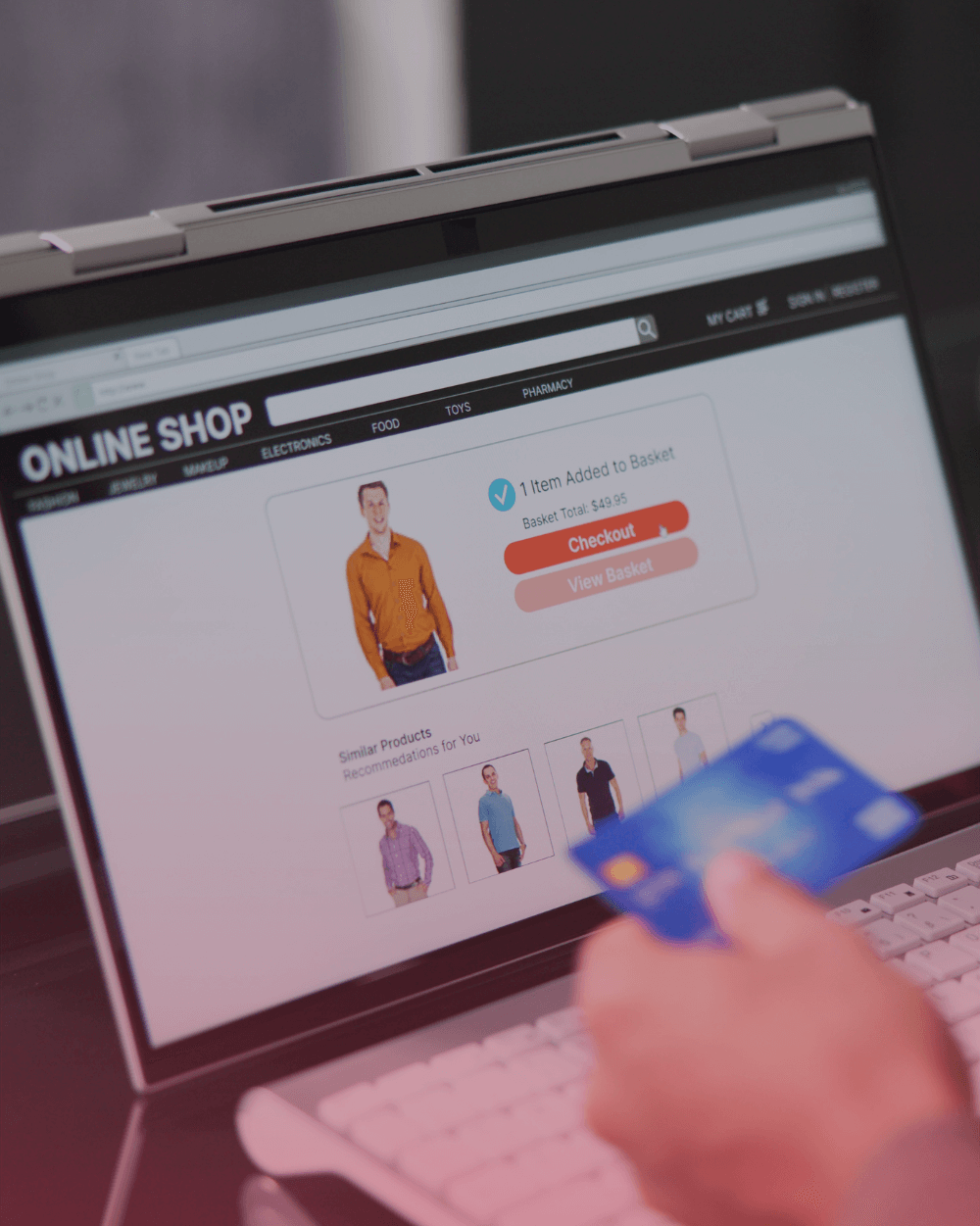
6 Secret Strategy To Improve the Future Of Ecommerce
- Jay Kakadiya
- August 2, 2024
- Developer
- 0 Comments
Ecommerce, short for electronic commerce, means buying or selling of products and services online. It has grown rapidly in the past few years. Today, it’s a major part of the global economy.
People shop online for convenience and variety. Businesses get benefit from reaching customers worldwide.
The pandemic accelerated the shift to online shopping. Many traditional stores now offer online options.
The ecommerce industry is constantly evolving. New technologies are reshaping how we shop. Trends like mobile shopping and social commerce are gaining traction.
In this article, we’ll explore the future of ecommerce. We’ll look at emerging technologies and trends. We’ll also discuss challenges and predictions. Let’s dive into the exciting world of ecommerce’s future!
Current State of the Ecommerce Industry
The ecommerce industry is booming. Online sales have skyrocketed in recent years. More people are shopping online than ever before.
Major players like Amazon and Alibaba dominate the market. They offer a wide range of products and fast delivery. Smaller businesses are also thriving, thanks to platforms like Shopify and Etsy.
Mobile commerce is on the rise. Many consumers prefer shopping on their smartphones. Mobile apps provide a seamless shopping experience.
Social media plays a big role in ecommerce. Platforms like Instagram and Facebook are popular for discovering and buying products. Social commerce is becoming a key sales channel.
Payment options are more diverse. Digital wallets, buy now pay later (BNPL) options, and cryptocurrencies are gaining popularity. These options make transactions easier and more secure.
The current state of ecommerce is dynamic and fast-paced. Continuous innovation drives the industry forward. As technology advances, the future of ecommerce looks promising. Let’s know in details.
Techniques To Improve the Future Of Ecommerce
#1: Artificial Intelligence and Machine Learning
Artificial Intelligence (AI) and Machine Learning (ML) are revolutionizing ecommerce. These technologies are enhancing customer experiences and optimizing business operations.
Personalized Recommendations
AI and ML analyze customer data to provide personalized product recommendations. For example, Amazon uses AI to suggest products based on browsing history, past purchases, and search queries. This personalization increases the likelihood of purchase and boosts customer satisfaction.
Chatbots and Virtual Assistants
AI-powered chatbots and virtual assistants are improving customer service. They provide instant responses to customer queries and assist with order tracking, returns, and product information.
For instance, Sephora’s chatbot on Facebook Messenger helps customers find products and make purchases. This reduces the workload on human customer service agents and provides quick, efficient service.
Inventory Management
ML algorithms predict demand and manage inventory levels efficiently. They analyze sales data, market trends, and seasonal patterns to forecast inventory needs. This helps businesses avoid stockouts and overstock situations.
For example, Walmart uses AI to optimize its supply chain and inventory management, ensuring that products are available when customers need them.
Dynamic Pricing
AI enables dynamic pricing strategies. Algorithms adjust prices in real-time based on demand, competition, and other factors.
For instance, airlines use dynamic pricing to adjust ticket prices based on seat availability and booking time. This maximizes revenue and keeps businesses competitive.
Fraud Detection
AI and ML enhance security by detecting fraudulent activities. They analyze transaction patterns to identify and prevent fraud.
For example, PayPal uses ML algorithms to monitor transactions and flag suspicious activities, protecting both buyers and sellers.
AI and ML are transforming ecommerce in numerous ways. These technologies enable businesses to offer personalized experiences, improve customer service, optimize operations, and enhance security. As AI and ML continue to advance, their impact on ecommerce will only grow.
#2: Augmented Reality (AR) and Virtual Reality (VR)
Augmented Reality (AR) and Virtual Reality (VR) are transforming the way customers shop online by providing immersive and interactive experiences.
These technologies bridge the gap between online and in-store shopping, offering a unique way to engage with products.
Virtual Try-Ons
AR enables virtual try-ons, allowing customers to see how products look on them before making a purchase.
For example, L’Oréal’s AR app lets users virtually try on different shades of makeup. This reduces the uncertainty of buying cosmetics online and increases customer confidence, leading to higher conversion rates.
Interactive Product Visualization
AR and VR provide interactive 3D visualizations of products. Customers can view items from different angles, zoom in for details, and even place virtual items in their physical space.
For instance, IKEA’s AR app allows users to place furniture in their homes to see how it fits and looks with their existing decor. This helps customers make informed decisions and reduces the likelihood of returns.
Virtual Showrooms
VR creates immersive virtual showrooms where customers can explore products as if they were in a physical store.
For example, Audi uses VR to offer virtual car showrooms, where customers can explore different models, customize features, and take virtual test drives. This enhances the shopping experience and provides a unique way to engage with high-value products.
Enhanced Online Shopping Experience
AR can enhance the online shopping experience by providing additional information and interactive elements.
For example, clothing retailers like Zara use AR to create virtual fashion shows in their stores, allowing customers to see models wearing the latest collections through their smartphones. This adds an element of excitement and engagement to the shopping process.
Training and Support
VR is also used for training and customer support. Retailers use VR simulations to train staff on product knowledge and customer service.
For example, Walmart uses VR to train employees on various scenarios they might encounter in-store. This improves the quality of service and ensures a better customer experience.
AR and VR are redefining ecommerce by making online shopping more interactive, engaging, and informative. These technologies provide unique ways to showcase products and enhance customer experiences, ultimately driving sales and satisfaction. As AR and VR technology continue to advance, their impact on ecommerce will only deepen.
#3: Blockchain Technology
Blockchain technology is making a significant impact on the ecommerce industry by enhancing security, transparency, and efficiency in various aspects of online transactions.
Secure Transactions
Blockchain provides a secure way to conduct transactions by using decentralized and immutable ledgers. Each transaction is recorded on a block and added to a chain, making it nearly impossible to alter or tamper with the data.
For example, Overstock accepts Bitcoin payments, leveraging blockchain to ensure secure and transparent transactions. This enhances customer trust and reduces the risk of fraud.
Transparent Supply Chain
Blockchain enhances supply chain transparency by providing real-time tracking of products from production to delivery. This helps ensure the authenticity and quality of products.
For instance, Walmart uses blockchain to track the origin of its food products. By scanning a product’s QR code, customers can access detailed information about the product’s journey, including the farm it came from and its processing details. This transparency boosts customer confidence in product safety and quality.
Smart Contracts
Smart contracts are self-executing contracts with the terms of the agreement directly written into code. They automatically execute actions when predefined conditions are met.
For example, ecommerce platforms can use smart contracts to automate payment releases to vendors once a customer confirms receipt of goods. This reduces the need for intermediaries and speeds up transaction processes, making them more efficient and cost-effective.
Loyalty Programs
Blockchain can streamline loyalty programs by creating a secure and transparent system for tracking and redeeming points.
For instance, Loyyal, a blockchain-based loyalty and rewards platform, allows customers to earn and redeem points across various participating merchants. This interoperability enhances the value of loyalty programs and encourages customer engagement.
Anti-Counterfeiting Measures
Blockchain helps combat counterfeit products by providing a verifiable history of each product.
For example, luxury brand De Beers uses blockchain to track the provenance of diamonds. Each diamond’s journey from the mine to the retailer is recorded on the blockchain, ensuring its authenticity.
Customers can verify the legitimacy of their purchases, protecting them from counterfeit goods.
Decentralized Marketplaces
Blockchain enables the creation of decentralized marketplaces, where buyers and sellers can interact directly without intermediaries.
OpenBazaar is an example of a decentralized ecommerce platform that allows users to trade goods and services directly using cryptocurrencies. This reduces transaction fees and enhances privacy for users.
Blockchain technology is revolutionizing ecommerce by enhancing security, transparency, and efficiency. Its applications in secure transactions, supply chain transparency, smart contracts, loyalty programs, anti-counterfeiting, and decentralized marketplaces are transforming the industry. As blockchain technology continues to evolve, its impact on ecommerce will likely expand, offering new opportunities for innovation and growth.
#4: Internet of Things (IoT)
The Internet of Things (IoT) is transforming the ecommerce industry by connecting everyday objects to the internet, enabling smarter interactions and more efficient operations.
IoT devices collect and share data, providing valuable insights and enhancing various aspects of the shopping experience.
Smart Inventory Management
IoT enables real-time inventory tracking through connected sensors and devices.
For example, Walmart uses IoT sensors in its warehouses to monitor stock levels and manage inventory automatically.
These sensors can detect when items are running low and trigger reorders, reducing the risk of stockouts and overstock situations. This leads to more efficient inventory management and better customer satisfaction.
Personalized Shopping Experiences
IoT devices can track customer behavior and preferences to provide personalized shopping experiences.
For instance, smart home devices like Amazon Echo can analyze user preferences and suggest products based on voice commands or previous interactions.
This personalization enhances the shopping experience and increases the likelihood of conversions.
Enhanced Customer Service
IoT improves customer service by providing real-time information and support.
For example, smart appliances like refrigerators with IoT capabilities can notify users when they are running low on groceries and suggest items to order online.
This seamless integration between smart devices and ecommerce platforms offers convenience and helps customers manage their shopping needs more effectively.
Automated Fulfillment and Delivery
IoT facilitates automated fulfillment and delivery processes through connected systems.
For example, companies like Amazon use IoT-enabled robots in their fulfillment centers to sort and package orders efficiently.
Additionally, IoT devices in delivery vehicles can track shipments in real-time, providing customers with accurate delivery estimates and enhancing transparency.
Smart Payment Solutions
IoT technology enables innovative payment solutions through connected devices.
For instance, IoT-enabled wearable devices like smartwatches can be used for contactless payments.
Customers can make purchases simply by tapping their smartwatch at payment terminals, providing a quick and convenient payment option.
Improved Supply Chain Visibility
IoT enhances supply chain visibility by providing real-time tracking of goods in transit.
For example, shipping companies use IoT sensors to monitor the conditions of perishable goods during transportation.
These sensors track factors like temperature and humidity, ensuring that products remain within optimal conditions and reducing the risk of spoilage.
Data-Driven Insights
IoT devices generate vast amounts of data that businesses can analyze to gain insights into customer behavior, product performance, and operational efficiency.
For example, retailers can use data from IoT sensors to understand foot traffic patterns in stores and optimize store layouts or promotions accordingly.
IoT is reshaping the ecommerce industry by enabling smarter inventory management, personalized shopping experiences, enhanced customer service, automated fulfillment, innovative payment solutions, improved supply chain visibility, and data-driven insights.
As IoT technology continues to advance, its impact on ecommerce will grow, driving innovation and efficiency in the industry.
#5: Voice Commerce
Voice commerce, or “vcommerce,” is revolutionizing the way consumers shop online by using voice commands to search for and purchase products.
With the rise of voice-activated devices and digital assistants, voice commerce is becoming an increasingly important trend in ecommerce.
Voice-Activated Shopping
Voice-activated shopping allows users to make purchases using voice commands.
For example, Amazon’s Alexa enables users to order products simply by speaking.
Customers can say, “Alexa, order more paper towels,” and the device will place the order using their previously saved payment and shipping information.
This hands-free shopping experience provides convenience and accessibility.
Personalized Recommendations
Voice assistants use AI to offer personalized product recommendations based on previous interactions and user preferences.
For instance, Google Assistant can suggest products or services that align with the user’s interests and past search history.
This personalized approach enhances the shopping experience and increases the likelihood of discovering relevant products.
Reordering and Subscription Services
Voice commerce simplifies reordering and managing subscriptions. Users can easily reorder frequently purchased items by saying, “Reorder my laundry detergent,” or manage their subscription services through voice commands.
This streamlines the purchasing process and ensures that customers never run out of essential items.
Voice-Enabled Search
Voice search enables users to find products quickly using natural language queries.
For example, users can ask their voice assistant, “Where can I buy eco-friendly yoga mats?” and receive a list of relevant online retailers.
Voice search improves the efficiency of finding products and enhances the overall shopping experience.
Integration with Smart Home Devices
Voice commerce integrates seamlessly with smart home devices, allowing users to control and purchase products from their connected environment.
For example, smart refrigerators with voice assistants can suggest recipes based on available ingredients and allow users to order missing items directly from the fridge.
This integration provides a cohesive and convenient shopping experience.
Hands-Free Assistance
Voice assistants provide hands-free assistance during the shopping process.
For example, while cooking, a user can ask their voice assistant for recipes or ingredient substitutions without having to handle their smartphone or computer.
This convenience enhances the user experience and allows for multitasking.
Enhanced Customer Engagement
Voice commerce encourages engagement by allowing brands to create interactive and conversational experiences.
For instance, brands can develop custom voice skills or apps for digital assistants, offering users engaging and personalized interactions with their products and services.
Voice commerce is transforming ecommerce by enabling hands-free shopping, personalized recommendations, easy reordering, and integration with smart home devices. As voice technology continues to evolve, its role in ecommerce will expand, offering new opportunities for enhancing customer convenience and engagement.
#6: Last-Mile Delivery Solutions
Last-mile delivery solutions are crucial in ecommerce, as they focus on the final leg of the delivery journey from the distribution center to the customer’s doorstep. Innovations in last-mile delivery enhance efficiency, speed, and customer satisfaction.
Drones and Autonomous Vehicles
Drones and autonomous vehicles are revolutionizing last-mile delivery by providing fast and efficient delivery options.
For instance, companies like Amazon are testing drone deliveries to quickly transport packages within urban areas.
Similarly, autonomous delivery vehicles, such as those used by companies like Nuro, can navigate streets to deliver groceries and other goods, reducing delivery times and costs.
Delivery Robots
Delivery robots are becoming increasingly common for short-distance deliveries.
For example, companies like Starship Technologies deploy small, self-driving robots to deliver food and parcels within local neighborhoods.
These robots can navigate sidewalks and interact with customers to deliver packages directly to their homes, providing a convenient and innovative delivery solution.
Real-Time Tracking and Notifications
Real-time tracking and notifications enhance the customer experience by providing updates on delivery status.
For example, services like UPS and FedEx offer real-time tracking through their mobile apps, allowing customers to see the exact location of their packages and receive notifications about estimated delivery times.
This transparency helps manage customer expectations and improves satisfaction.
Crowd-Sourced Delivery Platforms
Crowd-sourced delivery platforms leverage local freelancers to handle deliveries.
For example, apps like Postmates and DoorDash connect customers with local delivery drivers who pick up and deliver orders from restaurants and stores.
This approach increases flexibility and scalability, allowing businesses to handle a higher volume of deliveries without investing in a dedicated delivery fleet.
Smart Lockers and Pickup Stations
Smart lockers and pickup stations provide secure and convenient options for customers to collect their packages.
For example, companies like Amazon offer locker stations where customers can pick up their orders at a time that suits them.
This reduces the need for home delivery and provides a secure location for package pickup, enhancing convenience for customers.
Route Optimization and Delivery Management
Advanced route optimization and delivery management software improve the efficiency of last-mile delivery by optimizing delivery routes and schedules.
For example, platforms like Route4Me use algorithms to plan the most efficient routes for delivery drivers, reducing fuel consumption and delivery times.
This software helps businesses manage their delivery operations more effectively and reduce costs.
Sustainable Delivery Solutions
Sustainable delivery solutions focus on reducing the environmental impact of last-mile delivery.
For instance, companies like DHL are experimenting with electric delivery vans and bicycles to cut down on carbon emissions.
By adopting eco-friendly delivery methods, businesses can contribute to sustainability and appeal to environmentally conscious consumers.
Last-mile delivery solutions are transforming the ecommerce landscape by introducing innovations like drones, autonomous vehicles, delivery robots, and smart lockers.
These advancements enhance delivery speed, efficiency, and customer satisfaction while addressing challenges related to sustainability and logistics. As technology continues to evolve, last-mile delivery will become even more integral to the ecommerce experience.
Takeways
The future of ecommerce is being shaped by innovative technologies and strategies that enhance the shopping experience, improve operational efficiency, and expand market reach.
From AI-driven personalization and augmented reality to blockchain security and voice commerce, these advancements are revolutionizing the industry.
As ecommerce continues to evolve, embracing these technologies and strategies will be essential for businesses to stay competitive and meet the ever-changing demands of consumers.
The ecommerce industry is undergoing a transformative phase, fueled by technological innovation and a customer-centric approach.
By embracing these trends and techniques, businesses can navigate the complexities of the digital landscape, deliver exceptional experiences, and secure long-term growth and success.
The future of ecommerce holds immense potential, and those who adapt and innovate will lead the way.





Leave A Comment